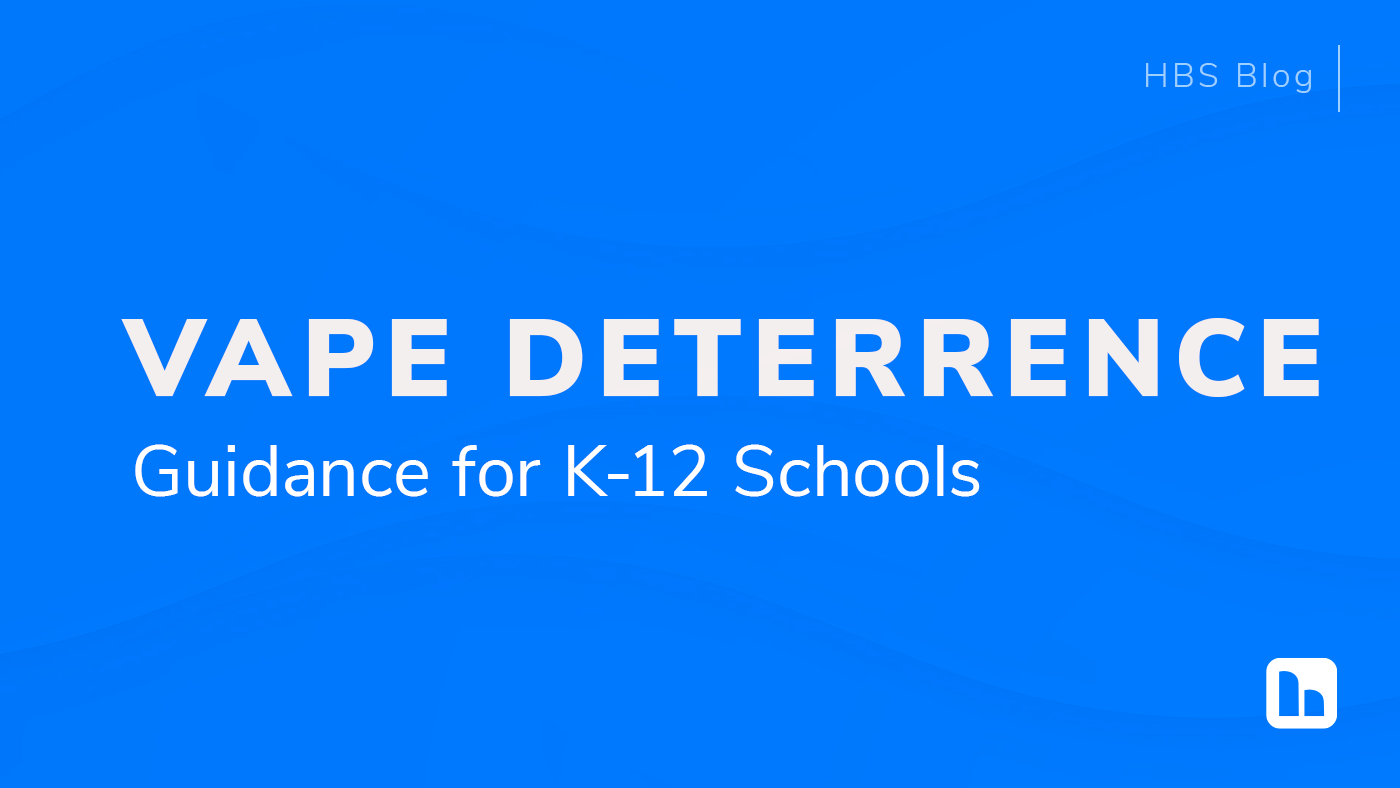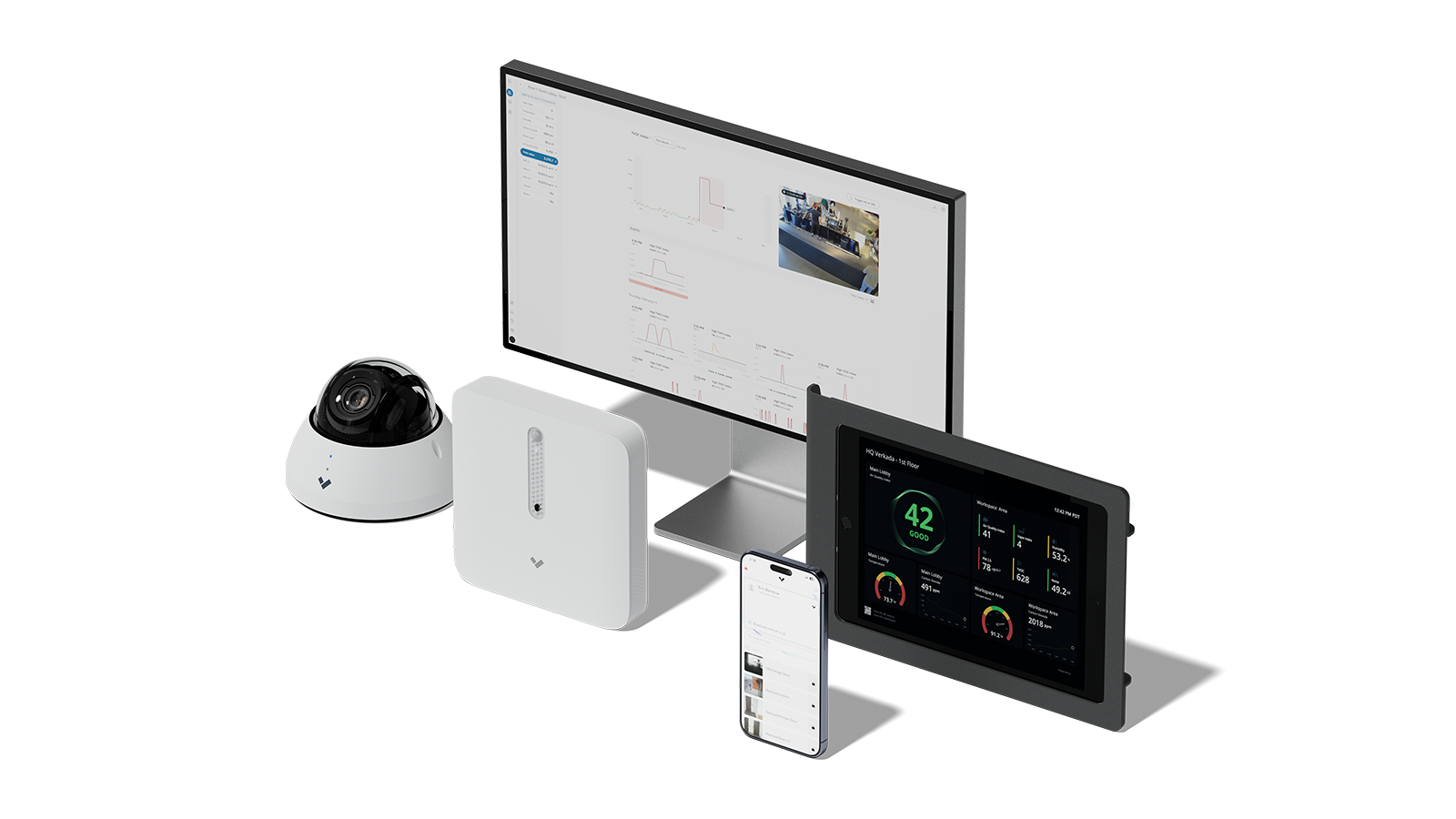Vape Detectors for Schools: A Major Part of a Deterrence Plan
- Read Time: 4 mins

It’s not all doom and gloom when it comes to vaping statistics. E-cigarette use among middle and high school students has dropped significantly over the last few years—from 2.13 million in 2023 to 1.63 million in 2024—marking the lowest youth vaping rate in years.
One of the biggest reasons: prevention and intervention efforts are making a difference.
But challenges remain. Despite the decline, vaping still affects nearly 6% of middle and high school students, with many incidents occurring in hard-to-monitor areas like bathrooms and locker rooms. These spaces present unique challenges for school staff, making it difficult to detect and address vaping effectively.
Solving this problem requires more than just one tool. However, vape sensors—often referred to as environmental sensors—play a major part in detecting, and just as important, deterring vaping. Vape sensors have their greatest impact when they’re part of a broader, multi-pronged strategy,
Why Vape Detectors for Schools Are Key
Vaping may be declining, but it remains a serious issue for schools. Bathrooms, locker rooms, and other secluded areas are the top hotspots for vaping incidents, with 90% of students identifying these locations as the most common places where vaping occurs.
Beyond the health risks for students who vape—including addiction, depression, and impaired focus—vaping also disrupts learning environments. 52% of non-vaping students say their learning is negatively impacted by vape-related classroom disruptions.
Vape detectors provide schools with a way to tackle this issue head-on. They help detect vaping incidents in real time, act as a deterrent through their presence, and provide administrators with actionable data to improve safety measures.
How Vape Sensors Work
Vape sensors use advanced technology to monitor air quality for signs of vaping. They detect chemicals, gases, and fine particles associated with vape aerosols, such as nicotine, THC, and flavored compounds.
- Particulate Sensors: Measure particles in the air using laser scattering technology, identifying the distinct signatures of vape aerosols.
- Gas Sensors: Detect changes in the concentration of specific gases linked to vaping, such as nicotine vapors.
- Advanced Algorithms: Minimize false positives by distinguishing between vape aerosols and harmless particles like steam or cleaning agents.
When a vaping incident is detected, the system sends real-time alerts to designated personnel, allowing for swift action. Some sensors even integrate with other security technologies, such as cameras and access control systems, to enhance response capabilities.
Vape Detectors Need to Be a Part of a Larger Strategy
While vape detectors are effective, they work best as part of a comprehensive anti-vaping plan. Schools that combine detection with education, counseling, and clear policies see the greatest success in reducing vaping incidents.
- Educate Students and Staff
Teach students about the dangers of vaping and train staff to recognize signs of use, such as frequent bathroom trips or lingering sweet odors. - Anonymize Reporting Systems
Provide students with a safe way to report vaping incidents without fear of retaliation. - Support Students Who Want to Quit
Offer counseling and peer support programs to help students break free from addiction. - Implement Targeted Policies
Enforce clear no-vaping policies and communicate them across campus. - Strategically Place Vape Detectors
Focus on high-traffic areas like bathrooms and locker rooms to maximize impact.
- Educate Students and Staff
Choosing the Best Vape Detectors for Your Facilities
Not all vape detectors are the same. We strongly believe Verkada’s environmental sensors stand out for many reasons, not least of which are their reliability and ease of use.
- Fewer False Alarms: Advanced algorithms differentiate between harmless aerosols and vape particles.
- Scalability for Multiple Campuses: Easily deploy sensors across one school or an entire district.
- Easy Integration: Combine sensors with Verkada cameras and access control systems for a unified safety solution.
Verkada sensors also provide detailed insights, helping schools identify when and where vaping occurs most frequently. This data allows administrators to proactively address problem areas and refine policies.
Thanks to Verkada’s vape sensors, word has spread very quickly amongst students that we have these sensors, and they work. From a preventative perspective, it’s been a huge asset for us. We’ve experienced a significant drop in the number of vaping incidents and complaints from both students and staff.
Brandon Ernst, Waukesha School District Resource Officer
Ready to Learn More About Vape Sensors?
Vape sensors are a vital part of addressing teen vaping, but they work best as part of a broader strategy. Whether you’re considering sensors for the first time or looking to improve your current system, Verkada’s solutions provide the precision and scalability you need to make a difference.
Explore how HBS and Verkada can help your school tackle vaping and create a safer, healthier campus today.








